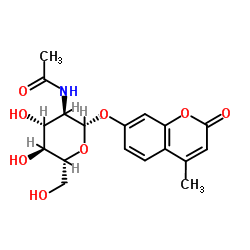Fluorometric detection and estimation of fungal biomass on cultural heritage materials.
Nick Konkol, Christopher J McNamara, Ralph Mitchell
文献索引:J. Microbiol. Methods 80(2) , 178-82, (2010)
全文:HTML全文
摘要
A wide variety of cultural heritage materials are susceptible to fungal deterioration. The paper, canvas, and stone constituents of our cultural heritage are subjected to harmful physical and chemical processes as they are slowly consumed by fungi. Remediation of fungal contamination can be costly and risk further damage to cultural artifacts. Early detection of fungal growth would permit the use of relatively noninvasive treatments to remediate fungal contamination before visible or lasting damage to the object has occurred. Current methods used for the detection and measurement of microbial biomass, such as colony counts, microscopic biovolume estimation, and ergosterol analysis are expensive and time consuming, or are inappropriate for use with fungi. Beta-N-acetylhexosaminidase (3.2.1.52) activity provides a reliable estimation of fungal biomass in soil and on building materials. Adapted for use on cultural heritage materials' fluorogenic 4-methylumbelliferyl (MUF) labeled substrate N-acetyl-beta-d-glucosaminide (NAG) was used to detect beta-N-acetylhexosaminidase activity in the fungus Aspergillus niger. Fluorescence increased linearly with fungal biomass and the sensitivity of the assay was comparable to other biochemical techniques. The fluorometric assay was used to monitor fungal biomass on a variety of cultural heritage materials non-destructively, and without the introduction of chemicals or solvents to the surfaces.Copyright 2009 Elsevier B.V. All rights reserved.
相关化合物
| 结构式 | 名称/CAS号 | 分子式 | 全部文献 |
|---|---|---|---|
 |
氟代五氯丙酮
CAS:37067-30-4 |
C18H21NO8 |
|
Tay-Sachs disease heterozygote detection: use of a centrifug...
1991-02-01 [J. Med. Genet. 28(2) , 101-9, (1991)] |
|
TNFalpha-induced macrophage death via caspase-dependent and ...
2009-03-01 [Apoptosis 14(3) , 320-32, (2009)] |
|
A rapid method for detection of N-acetylglucosaminidase-type...
1994-05-01 [Electrophoresis 15(5) , 662-5, (1994)] |
|
Fluorometric measurement of urinary N-acetyl-beta-D-glucosam...
1986-10-31 [Clin. Chim. Acta 160(2) , 123-7, (1986)] |
|
Amphotericin B stimulates secretion of beta-hexosaminidase f...
1991-05-01 [Biochem. Int. 24(2) , 235-41, (1991)] |